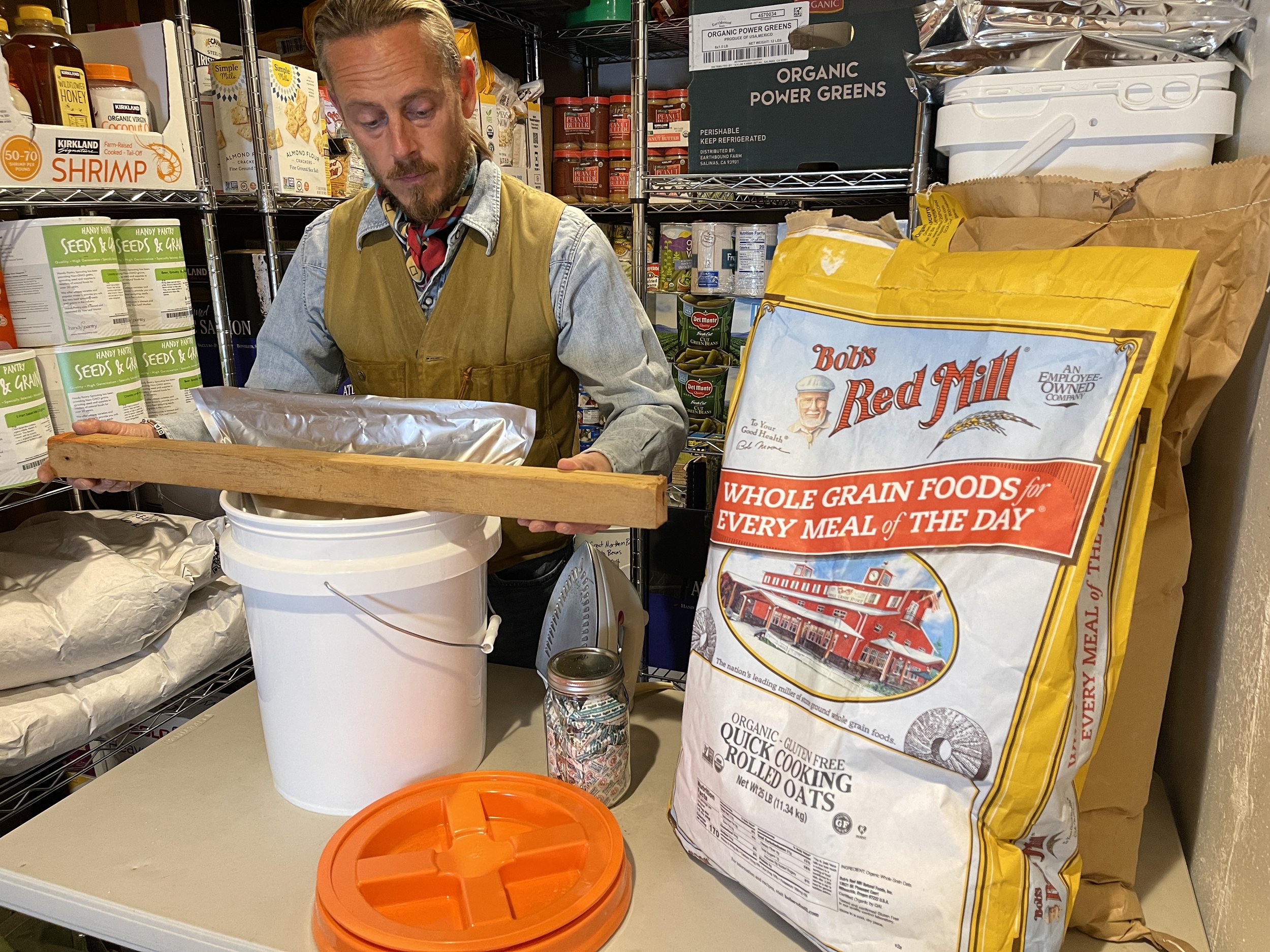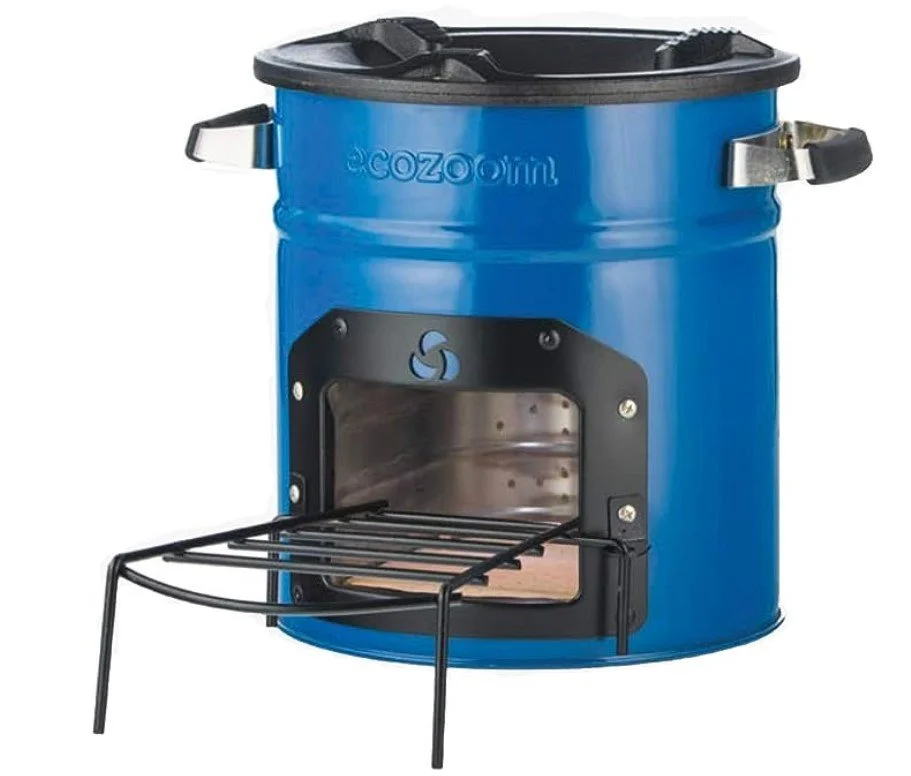If I Only Had $250 to Invest in Long Term Food Storage: How to Stock & Store Beans & Rice for Survival
In times of uncertainty and emergencies, having a reliable food supply can make all the difference. When considering long-term food storage on a budget, rice and beans emerge as top choices due to their affordability, longevity, and nutritional value. In this guide, we'll explore why rice and beans are an excellent choice for survival food, how to store them using 5-gallon buckets and vacuum-sealed Mylar bags, and provide instructions for cooking these essential staples.
The Power of Rice and Beans for Long Term Survival Food Storage
Nutritional Benefits: The combination of white rice and beans is a strategic choice for long-term survival food storage. White rice is packed with carbohydrates, providing essential energy, while beans, rich in protein and fats, offer vital nutrients necessary for long-term sustenance.
Long Shelf Life: One of the most significant advantages of storing rice and beans is their impressive shelf life. White rice can last 5+ years right off the shelf, but when stored in oxygen-free conditions, it can remain edible for up to 30 years. Beans, when kept away from oxygen and light, can last almost indefinitely. After a while beans may be difficult to re-hydrate but they still remain edible and can be ground into a meal for making something similar to refried beans.
Affordability: Rice and beans are not only nutritious but also budget-friendly. A 5 lb bag of white rice costs $4.97 at WALMART, making a 5-gallon bucket (30 lbs) of rice around $30. Dried pinto beans, available in 4 lbs bags at WALMART, are an economical option at approximately $3.76, totaling roughly $28 for a 5-gallon bucket (30 lbs) of beans. With a combined food cost of approximately $58 (minus flavorings), you can store a 50-day food reserve for one person, calculated at approximately 2000 calories per day. [Don’t get caught up in the details - all of these figures vary from person to person and family to family.]
Storing Rice and Beans with 5-Gallon Buckets and Vacuum-Sealed Mylar Bags
While you can buy rice & beans pre-packaged in 5-gallon pails, you can also create your own long-term food storage by vaccum sealing them yourself in plastic 5-gallon buckets at home.
Materials Needed:
5-gallon food-grade buckets with lids (https://amzn.to/3QN8jju)
Mylar bags (large enough to line the bucket) (https://amzn.to/47lVxhm)
Oxygen absorbers - included with mylar bags in link above
Vacuum cleaner
Home iron
White rice and dried beans (sourced from preferred sources)
Although I have listed the steps below, I have included a step-by-step video below that shows how to repackage and store rice and beans in 5-gallon buckets using mylar bags.
Instructions:
Ensure your buckets are clean and dry before starting the process.
Line the inside of each bucket with a Mylar bag, leaving extra material to fold over and seal at the top.
Fill the Mylar-lined bucket with white rice or dried beans, ensuring it's dry and free from any moisture.
Place 2000cc oxygen absorbers in the with the dry food. This eliminated any remaining oxygen after vacuum sealing.
Carefully fold the excess Mylar bag over the top of the food, eliminating as much air as possible.
Seal the Mylar bag tightly using a hot iron by running the iron across the bag over a 2x4 across the lip of the bucket. Leave about 2-inchs of UNSEALED bag.
Use the hose on a vacuum or shop vac to suck out as much of the remaining air as possible.
Quickly seal the last 2-inch of mylar bag.
Secure the lid on the bucket, ensuring an airtight seal.
The DISASTER READY HOME
If you haven’t already, be sure to pick up a copy of my book, The Disaster Ready Home. In this book I cover the basic of preparing your home with long term food storage, water storage, off grid cooking, off grid heat, and using the bathroom. It is a treasure-trove of preparedness skills and a wonderful recourse for your preparedness efforts. Order here: https://amzn.to/40sHAM9
By following these steps, you can extend the shelf life of your rice and beans significantly, making them suitable for long-term storage. You can expect to extend the shelf life of these good up to 25+ years as long as these buckets are store in a cool, dry are away from the sun.
Cooking Rice and Beans
When it comes to preparing these essential staples, here are some tips:
Cooking Rice:
Rinse the rice thoroughly under cold water to remove excess starch.
In a large pot, combine 1 cups of white rice with 2 cups of water.
Bring the mixture to a boil over high heat, then reduce the heat to low, cover with a lid, and simmer for 15 minutes.
After simmering, turn off the heat and let the rice rest for an additional 5 minutes without removing the lid.
Fluff the rice with a fork before serving.
Cooking Beans:
Soak the dry beans in water overnight to rehydrate them.
Drain and rinse the soaked beans, then add them to a large pot and cover with 2-3 inches of water.
Add in seasonings!
Bring the mixture to a boil, reduce heat, and let it simmer.
After one hour, begin to taste and test if the beans are cooked to your liking. Cook as long as necessary.
Add a spoonful of flavored beans to cooked rice.
With these tips, you can prepare delicious and nutritious meals using your stored rice and beans, ensuring you are well-prepared for any challenging times that may come your way.
FLAVORS, FLAVORS, FLAVORS
The key to reducing food fatigue when it comes to beans and rice is having different flavors on hand. From Cajun spices to Mexican flavors, there are countless flavors that can be added to beans and rice to mix them up. Wild game such as fish, frog, snake, squirrel, bird, venison, and rabbit can add so much flavor, nutrients, and calories to a rice and bean dish. Cooking the beans in left over bones is a great way to add healthy fats and immense flavor.
ACTION STEP
Search BEANS & RICE recipes on GOOGLE and print off as many variations as you can find to keep in a binder with your long term food storage. Consider adding some of the necessary shelf-stable spices and flavorings to prepare some of these dishes.
OFF GRID COOKING
One common question I get is how to cook rice and beans without electricity. Below is a small rocket stove that I keep on hand for this purpose. It is a very popular model that’s used in developing nations where people have limited access to fuel and resources. This stove can cook meals using small sticks and twigs and is also WOK compatible. The addition of a WOK to your off-grid cooking bundle give you the opportunity to make a fried-rice dish using eggs, meat, and other fresh vegetables. This stove can easily operate on a balcony or small back porch as well.
ECO ZOOM STOVE: https://amzn.to/47pgIPD



